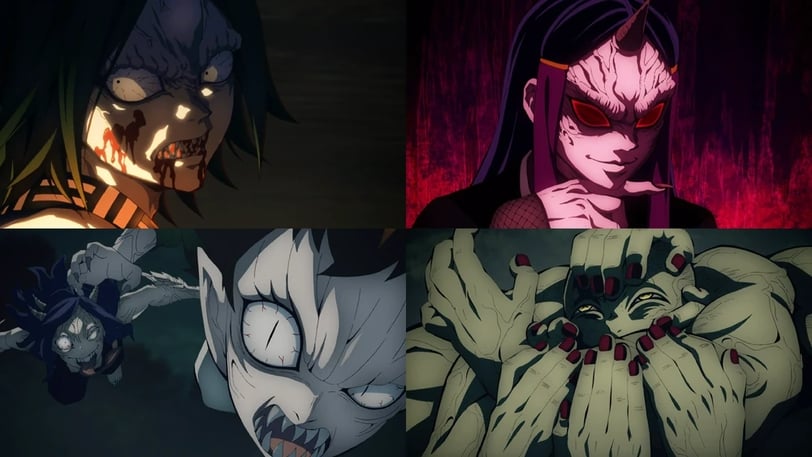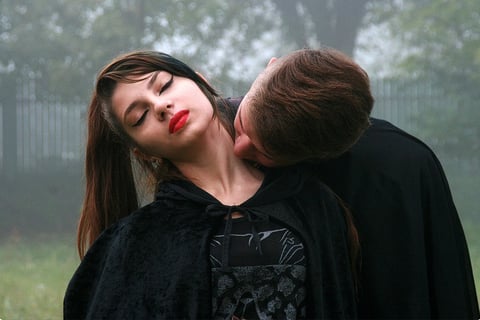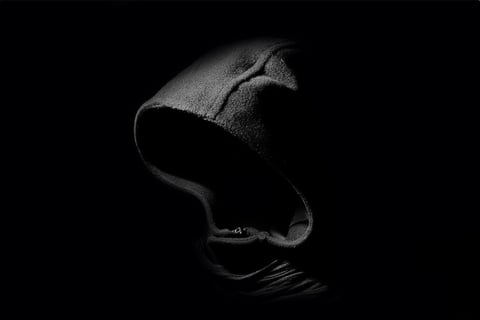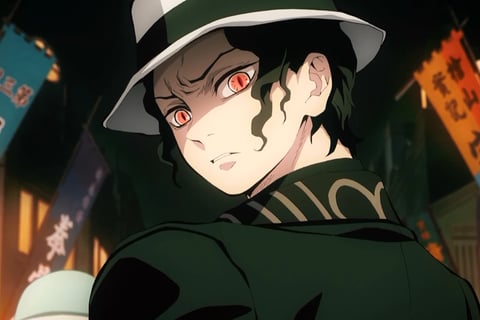Are Demon Slayer Demons Vampires? Discover Now!
Explore the intriguing parallels between demons in "Demon Slayer: Kimetsu no Yaiba" and traditional vampires. This article delves into their origins, abilities, and behaviors, comparing and contrasting these supernatural beings while examining deeper themes of humanity, redemption, and the nature of evil. Click to learn more!
DEMON SLAYER
Anime Fever
7/31/20246 min read


The popular anime and manga series "Demon Slayer: Kimetsu no Yaiba" has captivated audiences worldwide with its gripping storyline, beautifully crafted characters, and intricate lore. One of the central aspects of the series is its depiction of demons—sinister, powerful beings that pose a significant threat to humanity. Given their characteristics and abilities, a question that often arises among fans and critics alike is: Are Demon Slayer demons vampires? This article aims to explore this question by examining the traits, origins, and behaviors of demons in "Demon Slayer" and comparing them to traditional vampire lore.
Understanding Demons in "Demon Slayer"
Origins and Nature
In "Demon Slayer," demons are former humans who have been transformed into monstrous beings through exposure to Muzan Kibutsuji's blood. Muzan, the progenitor of all demons, is an ancient and nearly invincible being with the power to create and control other demons. When a human is injected with his blood, they undergo a painful transformation that grants them enhanced physical abilities, regenerative powers, and a thirst for human flesh.
Demons in this series are characterized by their superhuman strength, speed, and agility. They also possess the ability to regenerate from almost any injury, making them incredibly difficult to kill. However, they have a significant weakness: sunlight. Exposure to sunlight causes them to burn and disintegrate rapidly, effectively killing them. This vulnerability forces demons to operate mainly at night, hiding from the sun's lethal rays.
Abilities and Behavior
One of the most notable abilities of demons in "Demon Slayer" is their Blood Demon Arts. These are unique supernatural powers that vary from demon to demon, often reflecting their personalities or experiences as humans. For example, some demons can manipulate their bodies into deadly weapons, control elements like fire or ice, or even create illusions to deceive their enemies.
In terms of behavior, demons are typically driven by an insatiable hunger for human flesh. This cannibalistic urge is a core aspect of their existence and is essential for their survival and growth. Consuming human flesh not only sustains them but also allows them to become stronger and develop new abilities.
While most demons are portrayed as malevolent and ruthless, "Demon Slayer" also explores the tragic aspects of their existence. Many demons retain fragments of their humanity, and some even express regret for their actions. The series often delves into the backstories of demons, revealing the circumstances that led them to become what they are and eliciting sympathy from the audience.
Vampires: A Comparative Analysis


Traditional Vampire Lore
Vampires are a staple of folklore and popular culture, with their origins rooted in various mythologies around the world. The modern concept of vampires has been heavily influenced by European folklore, particularly the legends of Eastern Europe. Some key characteristics of traditional vampires include:
Undead Nature: Vampires are typically depicted as undead beings, reanimated corpses that feed on the life force of the living, usually through blood.
Immortality: Vampires possess a form of immortality, ceasing to age and often being invulnerable to most forms of injury. However, they have specific weaknesses such as sunlight, garlic, holy symbols, and stakes through the heart.
Blood Consumption: The defining trait of vampires is their need to consume blood to survive. This act often serves as a metaphor for various themes, such as sexual desire, power, and disease.
Transformation Abilities: Vampires often have the ability to transform into animals (like bats or wolves) and possess hypnotic powers to control or influence humans.
Creation of Other Vampires: Vampires can create more of their kind by biting humans and transforming them into vampires, perpetuating their existence.
Comparing Demons and Vampires
When comparing demons from "Demon Slayer" to traditional vampires, several similarities and differences emerge:
Similarities
Sunlight Weakness: Both demons and vampires are vulnerable to sunlight. In "Demon Slayer," sunlight is one of the few effective ways to kill a demon, while in traditional vampire lore, sunlight often weakens or destroys vampires.
Immortality and Regeneration: Demons in "Demon Slayer" possess near-immortality through their regenerative abilities, similar to the undead nature and healing powers of vampires. Both beings can recover from injuries that would be fatal to humans.
Consumption of Humans: Demons consume human flesh, while vampires drink human blood. This predatory behavior is central to their existence and survival in both mythologies.
Transformation: Muzan Kibutsuji's ability to create demons by injecting his blood into humans mirrors the vampire's ability to transform humans into new vampires through a bite.
Differences
Origin: The origin of demons in "Demon Slayer" is tied to Muzan Kibutsuji's blood, while vampires are traditionally depicted as undead beings or cursed individuals. The process of becoming a demon is more scientific (albeit supernatural) in nature, compared to the mystical or cursed origins of vampires.
Physical Appearance: Demons in "Demon Slayer" often undergo grotesque physical transformations, becoming monstrous in appearance. Vampires, on the other hand, are typically portrayed as retaining their human appearance, often with a seductive or aristocratic demeanor.
Abilities: While both demons and vampires possess unique abilities, the Blood Demon Arts in "Demon Slayer" are more varied and personalized compared to the more uniform powers of traditional vampires (such as transformation and hypnosis).
Humanity and Morality: "Demon Slayer" delves deeply into the humanity of demons, often portraying them as tragic figures with complex backstories. Traditional vampire lore typically focuses on the vampire's predatory nature and the moral implications of their actions, though modern interpretations have also explored their humanity.
Demons in Popular Culture: A Broader Perspective


"Demon Slayer" is not the first work to blur the lines between demons and vampires. Throughout popular culture, the depiction of demons and vampires has evolved, often overlapping and borrowing elements from each other.
Vampires as Demons
In some interpretations, vampires are considered a type of demon or are created through demonic influence. For example, in the Buffy the Vampire Slayer universe, vampires are created when a demon's essence infects a human corpse, blending demonic and vampiric traits.
Demons with Vampiric Traits
Conversely, demons in various media often exhibit vampiric characteristics. In anime and manga, demons are frequently portrayed as creatures that feed on humans, possess supernatural abilities, and have weaknesses similar to vampires. This blending of traits creates a rich tapestry of mythological beings that defy strict categorization.
Cultural Adaptations
Different cultures have their interpretations of demons and vampires, each adding unique elements to the mythos. In Japanese folklore, for example, the concept of demons (oni) includes a wide range of supernatural beings, some of which share traits with Western vampires. This cultural exchange influences modern media, resulting in works like "Demon Slayer" that incorporate and reimagine traditional mythologies.
Thematic Exploration in "Demon Slayer"


Beyond the superficial similarities and differences, "Demon Slayer" uses its portrayal of demons to explore deeper themes. The series delves into the nature of good and evil, the struggle for redemption, and the impact of trauma and loss.
The Nature of Evil
"Demon Slayer" presents a nuanced view of evil through its depiction of demons. While demons are the antagonists, the series often reveals their tragic origins and the circumstances that led them to become monsters. This complexity challenges the notion of absolute evil, suggesting that even the most malevolent beings have a human side.
Redemption and Humanity
Many demons in "Demon Slayer" seek redemption or express regret for their actions. Characters like Nezuko, who retains her humanity despite being a demon, embody the potential for goodness even in the darkest of circumstances. This theme resonates with the idea that redemption is possible, and that one's nature does not solely define their fate.
Trauma and Loss
The transformation into a demon is often depicted as a response to trauma or loss. Muzan Kibutsuji himself became a demon out of a desire to escape death. The series explores how individuals cope with suffering and the lengths they go to avoid pain, even if it means losing their humanity.
Conclusion
While "Demon Slayer: Kimetsu no Yaiba" draws upon traditional vampire lore in its depiction of demons, it also introduces unique elements that set its demons apart. The similarities in their vulnerabilities, immortality, and predatory behavior create a compelling parallel between demons and vampires. However, the distinct origins, physical transformations, and personalized abilities of demons in "Demon Slayer" highlight the creative blending of mythologies that characterize the series.
Ultimately, "Demon Slayer" uses its portrayal of demons to explore complex themes of humanity, redemption, and the nature of evil. By blurring the lines between demons and vampires, the series invites audiences to reflect on the multifaceted nature of these mythological beings and the deeper meanings they represent. Whether viewed as vampires or a unique type of demon, the creatures of "Demon Slayer" continue to captivate and inspire, contributing to the rich tapestry of supernatural lore in popular culture.
